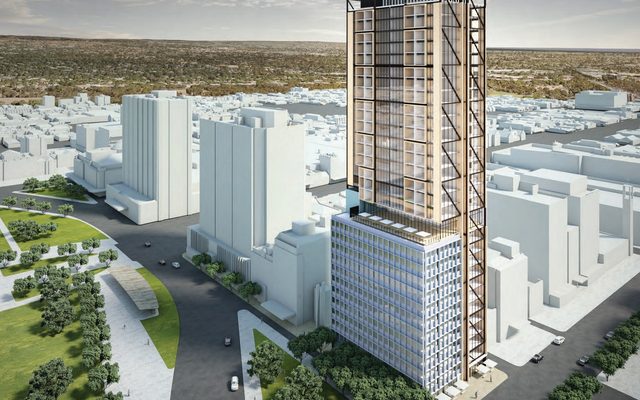This article is from the Australian Property Journal archive
THE Australian Prudential Regulation Authority (APRA) has lifted the minimum interest rate buffer up to 3% in a bid to stabilise risks amid surging house prices and sluggish wages growth.
In a letter to authorised deposit-taking institutions (ADIs), APRA told lenders it expects they will assess new borrowers’ ability to meet their loan repayments at an interest rate that is at least 3.0 percentage points above the loan product rate, up from 2.5 percentage points.
APRA Chair Wayne Byres said the move is a targeted and judicious action designed to reinforce the stability of the financial system, with more than one in five new loans approved in the June quarter at more than six times the borrowers’ income.
He said that “at an aggregate level the expectation is that housing credit growth will run ahead of household income growth in the period ahead”.
“In taking action, APRA is focused on ensuring the financial system remains safe, and that banks are lending to borrowers who can afford the level of debt they are taking on – both today and into the future.
“While the banking system is well capitalised and lending standards overall have held up, increases in the share of heavily indebted borrowers, and leverage in the household sector more broadly, mean that medium-term risks to financial stability are building,” Byers said.
CoreLogic data released on Friday showed house prices have skyrocketed by 20.3% over the past 12 months, the fastest annual growth rate in 32 years. AMP Capital’s chief economist Shane Oliver said price growth is forecast to steady over 2022 as affordability shrinks, consumer spending returns to pre-COVID patterns, and macro-prudential controls are imposed.
The Commonwealth Bank is expecting a further 6% growth next year in house prices, and AMP Capital is expecting 7% following a 20% increase through calendar 2021.
There is no sign household income will be catching up with house price growth any time soon. Oliver observed last week that capital city dwelling prices have risen 200% over the past 20 years compared to an 82% rise in wages, while over the past decade that has been 58% against 26% respectively. Meanwhile, the ratio of average house prices to average household disposable income has more than doubled over the last thirty years from around three times to around 6.5 times.
APRA said the decision will not have any impact on mortgage interest rates. The announcement was made one day after the Reserve Bank held interest rates at an ultra-low 0.1%.
APRA said its decision reflects growing financial stability risks from ADIs’ residential mortgage lending, and is supported by other members of the Council of Financial Regulators (CFR), comprising the Reserve Bank of Australia, the Treasury and the Australian Securities and Investments Commission.
APRA also consulted with the Australian Competition and Consumer Commission.
The decision requires banks from November to test whether new borrowers would be able to afford mortgage repayments if home loan interest rates were to rise three percentage points above the current rate.
In its letter to ADIs, APRA said estimated the increase to buffer will reduce maximum borrowing capacity for the “typical borrower” by around 5%.
RateCity estimates the average family’s maximum borrowing capacity could drop by $35,025, assuming assumes one adult working full time and the other part-time with two dependent children, based on CBA’s serviceability calculator on a fixed rate.
“These new changes will clip the wings of people borrowing at their capacity,” RateCity research director, Sally Tindall said.
“Many Australians looking to buy will be scrambling to find out how much their bank will now lend them and whether they can still afford to buy the property they want,” she said.
“The changes are designed to protect people from taking on risky levels of debt, however, it will hurt first home buyers who typically have smaller incomes and deposits.
She said that while property prices are influenced by a range of factors, how much people can borrow is a major one, adding that when APRA scrapped the minimum floor rate alongside a series of cash rate cuts in July 2019, “many Australians saw their borrowing capacity rise overnight and the property market followed”.
“Today’s hike to the serviceability buffer is also likely to have an impact on the property market.”
“This change will be a hard pill for some borrowers to swallow, however, it will ultimately protect them from overstretching themselves and that’s a good thing,” she said.
Canstar’s financial expert, Steve Mickenbecker said APRA’s move is forward-looking to account for future interest rate rises down the track.
“Large loans affordable at today’s rock-bottom rates can become stressed loans when rates are 4% or 5% percent higher.”
“APRA’s objective is to identify borrowing that will potentially risk future mortgage stress, before it becomes a loan.
“APRA is tackling stability rather than housing prices, but it must also be hoping that lower lending volumes may dampen housing prices.”
He said first home buyers whose income is stretched by repayments will inevitably find it tougher to get into the market, “but the move does no damage to first home buyers’ ability to save a deposit – their major pain point.”


















